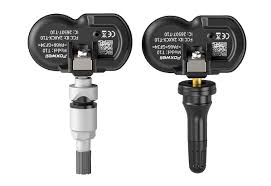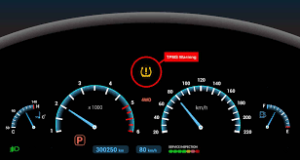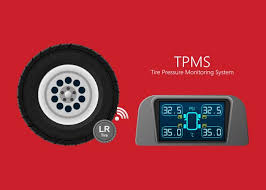Blog
How Wireless TPMS Systems Are Revolutionizing Tire Monitoring
How Wireless TPMS Systems Are Revolutionizing Tire Monitoring
Tire maintenance has always been an essential part of vehicle care, but advances in technology have made it easier and more efficient than ever before. One such innovation is the wireless Tire Pressure Monitoring System (TPMS), which is transforming the way drivers monitor their tires. Wireless TPMS systems offer significant benefits over traditional wired systems and manual tire checks, making them a game-changer for both personal and commercial vehicles. But what exactly is wireless TPMS, and how is it revolutionizing tire monitoring?
In this article, we’ll explore the features, benefits, and impact of wireless TPMS systems on tire safety, efficiency, and overall vehicle performance.
What is Wireless TPMS?
A wireless Tire Pressure Monitoring System (TPMS) is an advanced technology that uses wireless sensors to monitor the tire pressure and temperature of a vehicle in real-time. Unlike traditional wired TPMS systems, which rely on physical connections between sensors and the vehicle’s onboard computer, wireless systems send data through radio frequencies to the vehicle’s display unit or a mobile app.
There are two main types of wireless TPMS:
- Direct Wireless TPMS: This system uses sensors mounted inside or on the tire valves to directly measure the air pressure and temperature. These sensors communicate wirelessly with the vehicle’s dashboard display or an external receiver, giving the driver immediate readings of tire pressure in real-time.
- Indirect Wireless TPMS: Similar to traditional indirect systems, indirect wireless TPMS doesn’t measure tire pressure directly. Instead, it uses data from wheel speed sensors to detect changes in tire pressure based on the rotation speed of each wheel. While not as precise as direct systems, it can still alert the driver to tire pressure issues.
How Wireless TPMS Works
Wireless TPMS systems are powered by small sensors placed inside the tires or on the valve stems. These sensors continuously monitor tire pressure and temperature. When there’s a significant deviation from the optimal tire pressure, the sensors send a wireless signal to the vehicle’s control unit or a connected device like a smartphone.
Here’s a step-by-step breakdown of how wireless TPMS works:
- Sensor Activation: Each tire is equipped with a small wireless sensor that constantly measures air pressure and temperature.
- Data Transmission: The sensors transmit data wirelessly to a central receiver located within the vehicle or connected to a mobile app.
- Real-Time Alerts: If tire pressure drops below or exceeds the recommended levels, or if the tire temperature becomes too high, the system immediately sends an alert to the driver, warning them of a potential problem.
- Tire Pressure Display: The tire pressure data is displayed on the vehicle’s dashboard or the connected device, allowing the driver to view individual tire pressure readings at any time.

The Benefits of Wireless TPMS
1. Real-Time Monitoring and Alerts
One of the most significant advantages of wireless TPMS is its ability to provide real-time tire pressure readings. Traditional methods of checking tire pressure, such as manually using a gauge, only provide an update once the driver takes action. With wireless TPMS, drivers receive continuous updates, making it easier to maintain proper tire pressure.
Moreover, wireless TPMS sends instant alerts when tire pressure is too high or low, preventing dangerous situations like blowouts, uneven tire wear, and reduced fuel efficiency. The system also notifies the driver if there’s a sudden temperature change in the tires, which can be a sign of issues like a puncture or a slow leak.
2. Convenience and Ease of Use
With wireless TPMS, there’s no need to manually check each tire or worry about forgetting to check your tire pressure regularly. Wireless communication ensures that tire monitoring is effortless and automated. The system provides the driver with tire pressure data without requiring any action, making it easier to stay on top of tire health.
Some wireless TPMS systems even connect to mobile apps, allowing drivers to monitor their tires remotely, whether they’re at home or on the go. This added convenience is especially beneficial for fleet operators who need to track the condition of multiple vehicles.
3. Enhanced Safety
Maintaining optimal tire pressure is critical for the safety of any vehicle. Under-inflated tires can increase the risk of tire blowouts, affect braking and handling, and reduce the lifespan of tires. On the other hand, over-inflated tires can lead to a rough ride and premature tire wear.
Wireless TPMS provides constant monitoring, ensuring that drivers are immediately alerted to any issues with their tires. By addressing tire pressure problems as soon as they arise, wireless TPMS helps prevent accidents caused by tire failure, enhancing road safety for everyone.
4. Improved Fuel Efficiency
Tires that are under-inflated create more rolling resistance, which forces the engine to work harder and reduces fuel efficiency. Studies show that tires under-inflated by just 1 PSI can reduce fuel economy by 0.2%. By constantly monitoring tire pressure, wireless TPMS ensures that tires are always inflated to the optimal level, which can lead to better fuel efficiency and cost savings over time.
Moreover, regular monitoring through wireless TPMS helps prolong the life of your tires, reducing the need for frequent replacements. This not only saves money on tire purchases but also reduces the environmental impact of tire manufacturing and disposal.
5. Easy Installation and Maintenance
Wireless TPMS is relatively easy to install, especially compared to traditional wired systems. The wireless sensors can be attached directly to the valve stems, and the system can often be set up without the need for complex wiring or modifications to the vehicle. This ease of installation makes wireless TPMS an attractive option for both new vehicles and aftermarket retrofits.
Additionally, maintenance is minimal. Wireless systems typically require little more than periodic battery replacements for the sensors, making them low-maintenance compared to their wired counterparts.
Wireless TPMS in Commercial Fleets
Wireless TPMS isn’t just a boon for individual drivers—it’s also revolutionizing the way commercial fleets manage tire maintenance. Fleet managers can use wireless TPMS systems to monitor the tire pressure of every vehicle in the fleet in real time. This helps reduce downtime due to tire failures, improve safety, and lower fuel costs across the entire fleet.
Some advanced wireless TPMS systems offer centralized management through cloud-based platforms, where fleet managers can access tire data for all vehicles in the fleet, track maintenance schedules, and receive alerts for any tire-related issues. This level of oversight helps businesses reduce operational costs and improve efficiency.

The Future of Wireless TPMS
The future of wireless TPMS looks bright, especially with the advent of smart tires and connected cars. As vehicles become more integrated with advanced technologies, wireless TPMS systems will play a critical role in providing real-time data not just on tire pressure, but on overall tire health, performance, and even predictive analytics for tire wear.
For example, smart tires may soon be able to provide even more detailed information, such as road conditions, tire tread depth, and real-time monitoring of the tire’s structural integrity. Additionally, integration with connected car platforms could allow drivers to track their tire data from their smartphones or smartwatches, making tire maintenance even more seamless.
Conclusion
Wireless TPMS is revolutionizing the way we monitor and maintain our tires, offering significant benefits in terms of convenience, safety, and efficiency. Whether for personal vehicles or commercial fleets, wireless TPMS systems provide real-time monitoring, instant alerts, and improved fuel efficiency, making them an indispensable tool for modern drivers. As the technology continues to evolve, the future of tire monitoring looks brighter than ever, with wireless systems playing a key role in keeping vehicles safe, efficient, and ready for the road.


